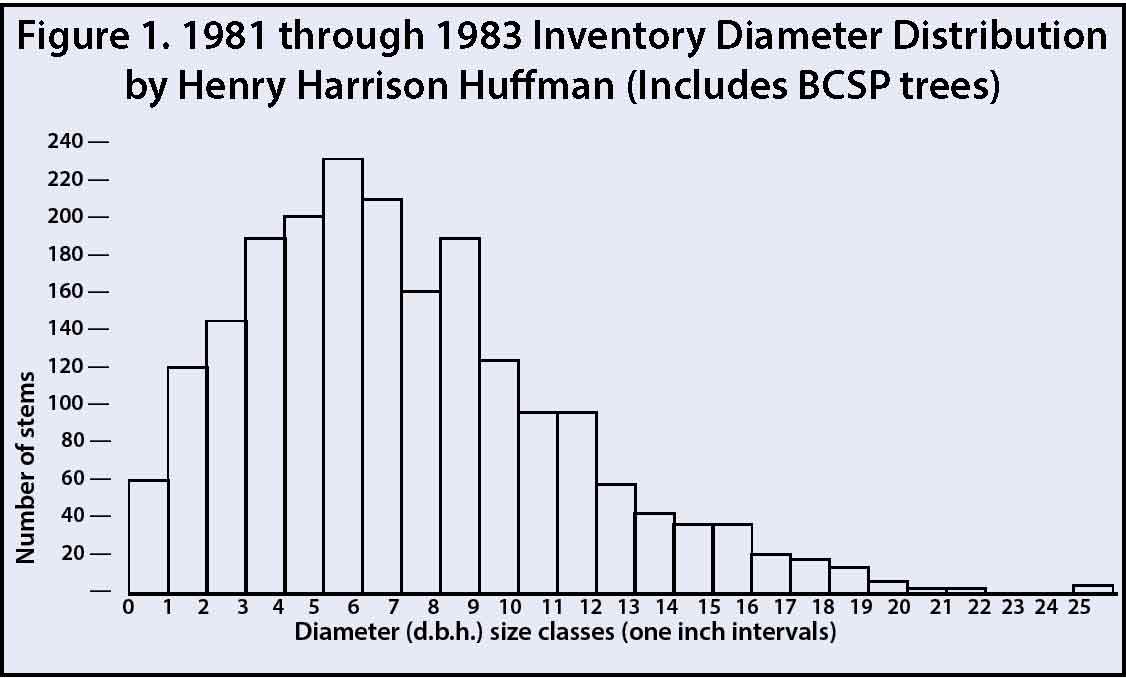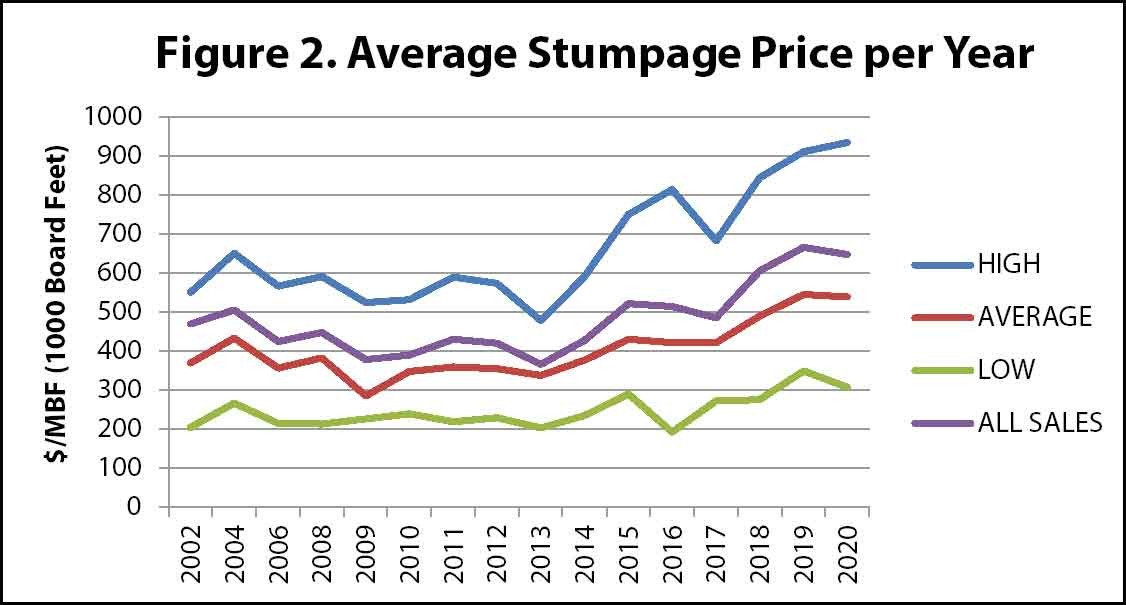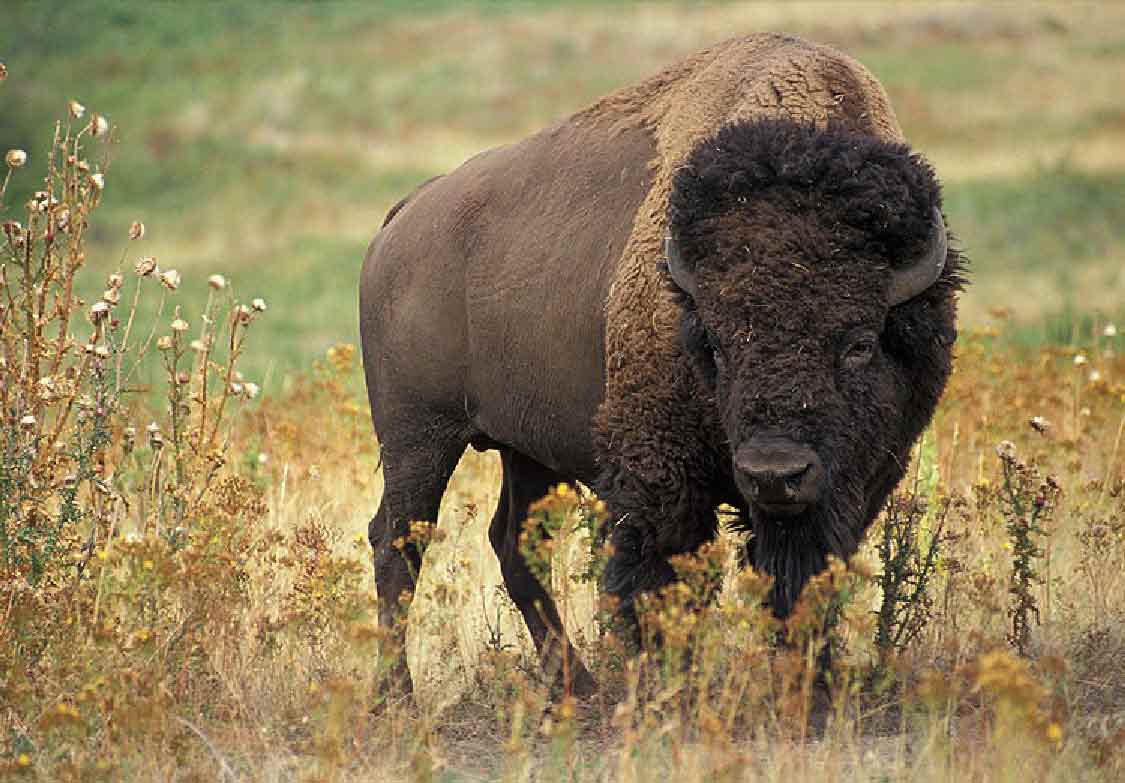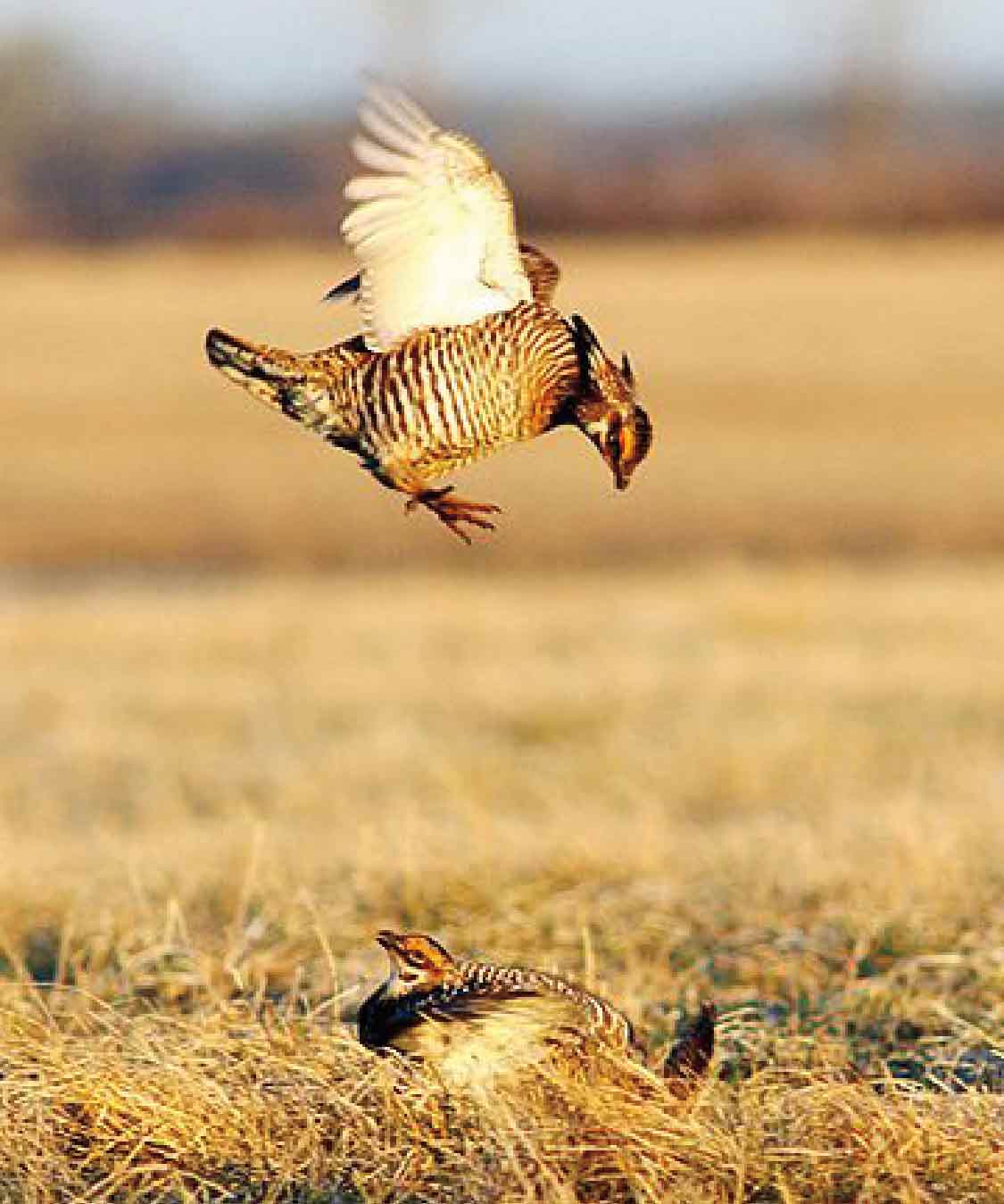Restore Prairie on Your Property to Protect History, Wildlife, and Humanity
Landowners in northwest and west-central Indiana have the opportunity to create significant real-world change on their properties. This can be done through the restoration of tallgrass prairie habitat in its historical range. But what exactly is special about tallgrass prairie?
Tallgrass prairie is defined as “a fire-dependent ecosystem distinguished by tall grasses (up to 10 feet tall), and deep, rich soils.”12 “Fire-dependent” means that fire prevents conversion of prairie to forest or other habitat dominated by woody species. This habitat provides numerous benefits for humanity and the environment. These processes largely stem from the deep root systems of prairie plants.10 Said processes include: erosion control, rainfall and runoff filtration, invasive weed control, and carbon storage.10
 Figure 1. Current and historical distribution of the Tallgrass Prairie. Map courtesy of The Nature Conservancy, Minneapolis, MN.Tallgrass prairie once covered 170 million acres of North America.4 It ranged north to south Manitoba, Canada, south to north Texas, west to central Oklahoma, and east to northwest and west-central Indiana (Figure 1)2. Because of conversion to agricultural fields beginning around 150 years ago, less than 6.8 million acres remain intact.4,5 That is an equivalent decrease in land cover of over 7 times the size of Indiana to only 3/10 of Indiana.
Figure 1. Current and historical distribution of the Tallgrass Prairie. Map courtesy of The Nature Conservancy, Minneapolis, MN.Tallgrass prairie once covered 170 million acres of North America.4 It ranged north to south Manitoba, Canada, south to north Texas, west to central Oklahoma, and east to northwest and west-central Indiana (Figure 1)2. Because of conversion to agricultural fields beginning around 150 years ago, less than 6.8 million acres remain intact.4,5 That is an equivalent decrease in land cover of over 7 times the size of Indiana to only 3/10 of Indiana.
Most of what remains of this habitat is in the Kansas Flint Hills.5 In Indiana, our tallgrass prairies once covered 15% of the state, or about 3.5 million acres (Figure 2).1
In 2009, there was only a few hundred acres of tallgrass prairie in Indiana.6 Today, there are over 22,500 acres in Indiana due to restoration efforts at Oak Ridge Prairie, Kankakee Sands, Willow Slough Fish & Wildlife Area, Beaver Lake Nature Preserve, Conrad Savanna Nature Preserve, Hoosier Prairie, and several smaller private land restorations.3,8,9 These restorations are fragmented and separated by many miles of agricultural, urban, and suburban land. Figure 2. Distribution of major types of prairies and savannas in presettlement times. Source: Indiana Soils: Evaluation and Conservation Manual. Used with permission.
Figure 2. Distribution of major types of prairies and savannas in presettlement times. Source: Indiana Soils: Evaluation and Conservation Manual. Used with permission.
The tallgrass prairie was also an ecosystem inhabited by many wildlife species. Larger animals including bison, wolves, elk, and deer once roamed these prairies. Moreover, so did smaller animals such as greater prairie-chicken and pocket gophers, to name a few.2,4 These animals have the potential to be reintroduced into our state.
As was alluded to earlier in this article, reintroduction is possible only by first restoring the tallgrass prairie habitat within its historical range. Hoosier landowners have the ability to facilitate the return of these animals and processes to their land. This would thereby help to restore and protect Indiana’s natural heritage. Moreover, the restoration of tallgrass prairie could directly benefit humanity by increasing food security. This would be accomplished by providing habitat for pollinators (declining insect species that pollinate crops such as cranberries, apples, plums, and more)7, game species (such as the greater prairie-chicken, elk, ), and “livestock” (i.e. American bison). American Bison. (Source: WikiMedia Commons)
American Bison. (Source: WikiMedia Commons)
One method for landowners to restore tallgrass prairie is through a federal program that assists landowners in restoring prairie (and other) habitat on their own land. Said program is the Conservation Reserve Program (or CRP for short). According to the USDA Farm Service Agency’s website, “CRP is a land conservation program” where “in exchange for a yearly rental payment, farmers [and landowners] enrolled in the program agree to remove environmentally sensitive land from agricultural production and plant species that will improve environmental health and quality.”11
Alan Mathew, who is a professor in and head of the Department of Animal Sciences at Purdue University in West Lafayette, IN, landowner in northwest Indiana, and former farmer of about 20 years, is also an active participant in the CRP.
Mathew owns 4 properties totaling 320 acres in the highly-agricultural White County Indiana. “Most of the land is under crop production under cash rent leases … with the remainder in prairie wildlife habitat, ponds, or woodlands.” He enrolled 16 acres in CRP and CREP (Conservation Reserve Enhancement Program; another program that is part of the CRP). He has decided to keep 31 acres as wildlife habitat without participating in CRP. Twenty-one of these acres he keeps as tallgrass prairie and savanna – the transition from woodland to prairie – habitat.
As an avid hunter, he decided to enhance and restore wildlife habitat on his own properties. In 2011, he reached out to a local wildlife biologist for advice. The wildlife biologist told him about the CRP, the CREP, respective program benefits, as well as proper plant species and management tips. Since enhancing and restoring wildlife habitat in a land mostly devoted to crop and wind energy production, he noticed an increase in wildlife. Greater Prairie-Chicken. (Source: WikiMedia Commons)
Greater Prairie-Chicken. (Source: WikiMedia Commons)
He has observed an increase in the number and species of songbirds and mammals. Moreover, he noticed a more consistent presence of ring-necked pheasant, northern bobwhite, and red fox. He also noticed more white-tailed deer in his plots that are amidst row crops and far from any other cover. Additionally, plants such as milkweed have established themselves in areas that he does not burn, mow, or spray. As a result, he has noted a greater variety of insects, including: monarch butterflies, praying mantis, and fireflies in those areas. Lastly, the presence of a vernal pond (present only during periods of heavy rainfall) and a permanent pond on two of his properties provided habitat for new populations of amphibians and aquatic turtles.
Mathew also explained some perceived pros and cons of participating in the CRP. His main pro was the return of wildlife. Other pros included consistent annual payments throughout the contract compared to uncertainties in crop production conditions and crop sale prices. He also said CRP payments are comparable to cash rent values in his area. Another pro was the optimization of income potential from what would have been marginal farmland.
Cons included potential lost profit during optimal farming years and/or on high quality farmland (compared to marginal farmland). Another con is the required maintenance. Such maintenance includes invasive plant species control by annual selective spraying, prescribed burning every few years, and occasional tilling and replanting as needed to maintain forb – non-woody, flowering plants that are not grass- or reed-like – populations. Regardless of these pros and cons, Mathew stated that the economic situation is unique to each landowner.
Mathew shared some advice for landowners interested in participating in the CRP. For maintenance, he recommended that landowners consider whether they will perform the maintenance themselves or hire others instead. Other advice included to consider one’s own goals, type(s) of land owned. This would be in regards to which conservation program(s) they would qualify for and which land would have the greatest impact for wildlife, soil, and water conservation/enhancement. Finally, he recommended that aspiring CRP participants contact their local Soil and Water Conservation Service, county Extension office, wildlife biologist, and local active CRP participants for an abundance of free information and personal insights.
“Once you’ve made the decision, enrolled in and implemented the program: Enjoy the benefits, including a greater variety and number of wild animal and plant species, and the satisfaction of contributing to the conservation and biodiversity on your own land, as well as that of the surrounding area.” – Alan Mathew
Zach Finn is a graduate research assistant in Purdue University’s Department of Forestry and Natural Resources.
BIBLIOGRAPHY
1. Betz, R. The Prairies of Indiana. Retrieved June 17, 2020, from https://images.library.wisc.edu/EcoNatRes/EFacs/NAPC/NAPC05/reference/econatres.napc05.rbetz.pdf
2. Jacques, S. (2019, September 27). Kansas State University. Retrieved June 15, 2020, from https://www.k-state.edu/seek/spring2017/konza/index.html
3. Lake County Parks & Recreation. (2020). Oak Ridge Prairie. Retrieved June 18, 2020, from https://lakecountyparks.com/245/Oak-Ridge-Prairie
4. National Park Service. (2018, December 10). A Complex Prairie Ecosystem. Retrieved June 17, 2020, from https://www.nps.gov/tapr/learn/nature/a-complex-prairie-ecosystem.htm
5. National Park Service. (2020). Tallgrass Prairie National Preserve (U.S. National Park Service). Retrieved June 17, 2020, from https://www.nps.gov/tapr/index.htm
6. Runkel, S. T., & Roosa, D. M. (2009). Wildflowers of the tallgrass prairie: The upper Midwest. University of Iowa Press
7. Tangley, L., & National Wildlife Federation. (2020, June 1). A Downward Spiral. Retrieved June 15, 2020, from https://www.nwf.org/Home/Magazines/National-Wildlife/2020/June-July/Conservation/Insect-Decline
8. The Nature Conservancy. (2020). Hoosier Prairie. Retrieved June 18, 2020, from https://www.nature.org/en-us/get-involved/how-to-help/places-we-protect/hoosier-prairie/
9. The Nature Conservancy. (2020). Kankakee Sands. Retrieved June 18, 2020, from https://www.nature.org/en-us/get-involved/how-to-help/places-we-protect/kankakee-sands/#:~:text=About Kankakee Sands&text=Together these natural areas total,oak savannas in Northwest Indiana.
10. University of Northern Iowa. (2020). Ecosystem Services. Retrieved June 15, 2020, from https://tallgrassprairiecenter.org/prairie-roots-project/ecosystem-services
11. USDA Farm Service Agency. (2020). Conservation Reserve Program. Retrieved June 15, 2020, from https://www.fsa.usda.gov/programs-and-services/conservation-programs/conservation-reserve-program/index
12. U.S. Fish and Wildlife Service. (2020, April 7). Tallgrass Prairie - Neal Smith - U.S. Fish and Wildlife Service. Retrieved June 18, 2020, from https://www.fws.gov/refuge/Neal_Smith/wildlife_and_habitat/tallgrass_prairie.html
